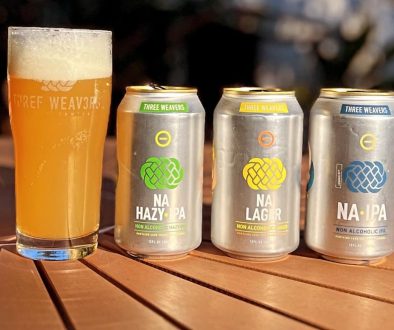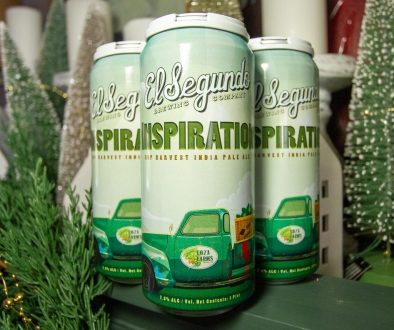Finally, The Truth About Bock!
There’s snow on the ground here in central Pennsylvania, and it’s going to struggle to get above 20° today. It may be wildly different where you are, but even so, just knowing that part of the country, the hemisphere, is wrapped against the cold, sitting by a fire, should make you think of bock beer. I know I’m looking at my stock of Tröegs Troegenator and Schlenkerla Urbock with a considering eye.
Why now? Why bock, why not DDH DIPA? Sorry, just the thought of DDH DIPA brings to mind “Abie’s Irish Rose,” a hackneyed comedy that ran for years on Broadway in the 20s, and drove critic Robert Benchley to pen this pithy mid-run review: “See Hebrews 13:8.” It’s a New Testament verse you can hear him muttering: “Jesus Christ, the same yesterday, and today, and for ever.”
Break out! Break out with a big mug of Bock! The power of malt compels you!
There’s been a lot of bullshit, stuff and nonsense, written about bock beers. I’m not going to rehash any of it, why waste time? Let’s start fresh.
Bocks are German. The origin of the name and the type are the subject of regional argument, but none of that matters even a little bit: they’re big strong lagers, they’re German, they’re lightly hopped, and we call them bocks. ’Nuff said, to quote Stan Lee. Let’s get beer in the glass and move on.
But first, a personal request: cue up some Bach. You know, Johann Sebastian Bach was German. If you’re going to drink classic German beer, think about some classic German music, because the man was awesome, a genius.

Why do I bring up Bach? Because this week I’m mourning the passing of a friend, Bill Moeller, the last of the great German-American brewers. Bill brewed beer in the old regional breweries of Pennsylvania from the 1950s to the 1980s, and then became the in-demand consultant for the new microbrewers, formulating the original Brooklyn Lager, Dock Street Bohemian Pilsner, and whole ranges for other small brewers.
One of his best, IMO, was Dock Street’s Illuminator Double Bock. And Bill was a fan and supporter of classical music, a very German thing. I’m listening to Bach’s Brandenburg Concertos as I write this. Try them, they might surprise you.
Back to bock! In a larger context, to be circular, the gestalt (another German word!) of bock is German. They are lagers, made from good solid malt, nothing fancy. They are unashamed strong beers, focused on purity (Reinheitsgebot, the German beer law geeks used to quote, literally mean ‘purity command’). But perhaps most German, together they represent the idea of a spectrum, a continuum of beers that are very similar – malty, smooth, strong – differentiated by strength, color, hopping level.
Spread out them out on a palette, then, and start small. Bock, to start with, is still a stronger than average lager, usually a shade of brown, but they can be golden. These basic bocks are getting hard to find, which is a damned shame. Penn Brewing’s seasonal St. Nikolaus Bock is a classic.
Heller Bock and Maibock (which, because we’re Americans, can be said either “MY-bock” or “MAY-bock”) are roughly similar; slightly stronger than bock and a robust gold in color. American-brewed maibocks tend to be hoppier, because we like hops and are always looking for the slightest excuse to dump them in. And yes, also not easy to find these days. See my last column for thoughts on why.
Doublebock, or in German, Doppelbock, is what you find more often now, because we love our big strong beers! Woohoo! (Ermmm…Hebrews 13:8.) Dbocks come in north of 7%, and may run up to 10 or 12%. Doublebocks are usually dark, sometimes quite dark, but can be light in color; Capital Brewing in Wisconsin makes a fantastic blonde doublebock.
Doublebocks are often given names that tip the hat to one of the original doublebocks, Paulaner Salvator. You’ll see doublebocks with names like Celebrator (Ayinger’s classic), Spaten’s Optimator, and the above-mentioned Troegenator, which defiantly continues to be one of the brewery’s best sellers; so suck that, DIPA.
They are also the main feature of what the Germans quite practically call ‘Starkbierzeit,’ or “Strong Beer Time.” Starkbierzeit coincides with Lent. What? Lent is a time of denial? HA! I’ll take two fish dinners and a mug of Salvator! The Germans have big bock beers they release just for Lent, and then they roll out more for Easter. Gotta love that: I do.
An interesting variation in doublebocks – and to some extent, in all bocks – is the attenuation. Some are hefty and sweet, others have that skillful Munich touch of “dry maltiness,” an elusively wonderful character that pulls off being malty without being cloying. There are times for both, to be sure, and that’s why you have to sample widely. Start today!
Just a few more variations. Weizenbock is a wheat beer version of doublebock, brewed with the weizen yeast and full of all that hefeweiss funk: clove, banana, smoke, plum, vanilla, with the smooth power of a doublebock. Schneider Aventinus is the classic.
Rauchbock is a smoked variant, and there’s nothing better than a boldly smoky mug of Schlenkerla Urbock with a big platter of barbecue, or smoked salmon, or cheese, or a good friend. To drink it with, not on a platter. Who am I, Hannibal Lector?
Finally, Eisbock is the hitman of the family. Take your bock – whatever type – and freeze-concentrate it by chilling it down so the water freezes out of the alcohol. Then either skim that off the top, or drain the remaining liquid from the tank and leave the ice behind. The process makes for a wicked strong, dangerously smooth hammer of a beer.
But remember, kids: be sure to say “concentrate” and not “distill,” because the government doesn’t like brewers distilling, and this does count, by U.S. regs. Even though it’s apparently fine when German (or Austrian, or Canadian) brewers do it and then ship it here. Laws are funny.
That’s the bock story, and now, it’s bock season! I’m starting with a green can of Genesee Spring Bock. Starkbierzeit starts after Fat Tuesday, March 1st. Then Easter is April 17 and we can start drinking any damned bock we want. Then we get our serious drink on for Walpurgisnacht, April 30th, when the spirits are out – scary, have a bock! – and you have to make lots of noise at midnight to scare them off. And then it’s May Day, and time for Maibock.
I mean, if you can’t have some fun with your beer, what’s the point? Now that I’m warmed up, I’m going to pop on the Bach Cello Suites and open up a Schlenkerla, and have a bit of fun myself. Prost!
Lew Bryson is the Senior Drinks Writer at The Daily Beast. Contributor to Bourbon+, Craft Spirits Magazine.
Author of Whiskey Master Class, Harvard Common Press (2/18/2020 release); “To enhance your knowledge in the magical world of distilling, my friend Lew Bryson is the perfect place to start.” — Colum Egan, Bushmills master distiller
Another great whiskey book I wrote: Tasting Whiskey, Storey Publishing; “Tasting Whiskey is a book that I would have loved to have had close at hand when I first started getting into whiskey.” — David Wondrich, author of Imbibe and Punch




